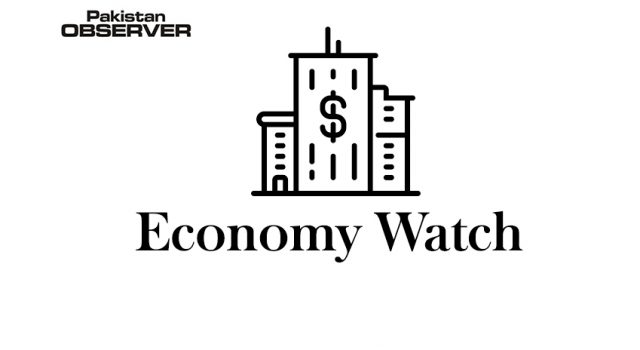Observer Report
Microorganisms are the earli
est life form on Earth and
have existed since the beginning of the planet. They have survived for millions of years through their continuous excellence at evolution. They are both abundant and diverse in today’s world, with billions of them around us. Their small size and rapid re-generation enable them to become prevalent in the continually growing and evolving microbial population, most of them causing diseases.
The discovery of the world’s first broadly effective antibiotics by Sir Alexander Fleming revolutionized medical practice in the twentieth century. These soon got labeled as “Silver Bullets,” capable of treating most of the infectious diseases with almost no side effects. Since then, they have become one of the most effective tools against all kinds of diseases. However, unregulated widespread use of antibiotics in recent years has resulted in antimicrobial resistance (AMR); i.e. the ability of microorganisms, especially bacteria, to resist or to become tolerant to antibiotics through genetic modifications; and become “Superbugs”.
Experts fear that if the issue is not countered effectively, it may lead to substantial increase in untreatable bacterial infections resulting in deaths of patients which otherwise could have been effectively treated. A study from United Kingdom predicts that it may cause as many as 10 million human deaths annually by 2050
It is clearly a complex, multisectoral public health problem associated with overuse and misuse of antimicrobials in human medicine and food production. Antibiotics are considered the first line of defense against any ailment. There are other issues of mal-prescription, and undue use as growth promoters in the agriculture and livestock sectors (food animals and poultry – their waste often used on crops as fertilizer). These antibiotics find their way into the food chain in the form of antibiotic residues; adding to the already rising burden.
Unregulated societies with rampant counterfeit drugs, like Pakistan, also fuels this situation.
Interconnectivity of human population around the globe has also allowed pathogens to spread across the world at a much wider and accelerated rate.
So, can we find a solution?
While vaccinations are an effective way to reduce disease burden, and ultimately reduce usage of antimicrobials, an increasing number of people are declining vaccination for themselves, their children and their animals. By doing so, they not only endanger themselves and their children but also create increasing reservoirs of pathogens within our society that may subsequently become Superbugs. The human population can no longer control its size, extent and connectedness. Humanity continues to be exposed to all existing and presumptive pathogens. The entire microbial ecosystem is already subjected to the antibiotics we have today. Novel pathogens, arising via zoonoses (transmission from animals to humans) and through other means, are also subjected to global antibiotics being used; thus, resistance in these new pathogens is also increasing. Therefore, it is unlikely that there will be any single long-lasting solution to the growing resistant infectious diseases.
The management of AMR crisis requires a two-fold approach. Firstly, the search for new antimicrobial agents and therapies, combined with rapid and cost-effective diagnostics, must be continued and expanded. Secondly, try limiting the number of microbials coming into the country from abroad and entering the local medical supply chain, in order to preserve the effectiveness of the current antimicrobial cures. Both strategies can be accomplished together, along with changing human behavior in regard to use of antimicrobials. It would also require an extra push from the prescribers, pharmacists, laboratory diagnostic practitioners, and policy makers .
Considering the multifaceted nature of the problem, the global community realized the pertinence of One Health approach and joined hands to prepare the Global Action Plan on AMR. Pakistan in turn prepared a National Action Plan (NAP) on AMR in line with the Global Action Plan. Many promoters, stakeholders and funding organizations are involved in its implementation, such as the UK’s Fleming Fund, implemented by DAI to strengthen One Health AMR surveillance systems in Pakistan, improve laboratory infrastructure, develop global AMR governance structures and improve public awareness regarding the issue. Lead Grantee, DAI Pakistan, along with consortium partners, Aga Khan University, Liverpool School of Tropical Medicine and Health Security Partners are investing in collaborations across all interrelated sectors, so to achieve the best health outcomes for people, animals, and plants in a shared environment.
While this may address most of the issues related to AMR in Pakistan, the real challenge lies in its implementation. Strict legislations must be executed on manufacturing, registration and sales of antimicro
bial drugs, while over-the-counter sale of drugs must be discouraged and banned.
Rigorous campaigns need to be launched on education and awareness of professionals as well as public. AMR should be incorporated in undergraduate study courses of medical and veterinary professionals so that they are better trained at judicious prescription of antibiotics, while regular refresher trainings need to be conducted for in-service professionals. Community level awareness campaigns also need to be duly considered to educate masses on the use of antibiotics.
Restricting antibiotic use in animal production systems is of utmost importance. Currently, there are no effective legislations for monitoring antimicrobial use in agricultural and livestock farming. Effective monitoring can help significantly. Vaccinations against bacterial diseases in these sectors should be encouraged to reduce antibiotic use.
—To ensure evidence-based, informed decision-making, the need of the hour is to put in place a systematic and thorough AMR surveillance system to precisely determine AMR burden in Pakistan. Animal health sector needs to be included in this surveillance net to have a clear picture of circulating resistant pathogens. Diagnostic capacity needs to be improved at national as well as sub-national levels. Infection, prevention and control practices should be encouraged in healthcare settings to avoid spread of infections. With a NAP well thought-out, legislations need to be created and surveillance needs to begin.
—Courtesy: Fleming Fund Country Grant Team – Pakistan










